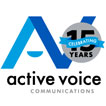Life as a writer can be frustrating. You spend your days (and sometimes your nights, too) poring over your copy. You agonize over every word. You edit and rewrite and proofread. Then, you send your content into the world.
Now, you wait.
You wait for a response. Will people comment? Will people share on Facebook or Twitter? Will they buy something or take action because of something you wrote?
But before you can get a response, you have to make sure people are reading. Here are a few reminders for getting your copy read.
1. A good, solid headline. We writers love quippy headlines. A play on words is our friend. But sometimes clever headlines can keep readers away. After all, if you have limited time for reading, you don’t have time to decode headlines. Feature stories in publications allow you the design option of writing a clever headline followed by a deck that better describes the story’s content. But online, you often don’t have that option. So, get to the point quickly. Don’t make readers guess what your blog post is about. Make it easy so they can quickly make a decision about whether to read. You’ll find a lot of sensationalism in headlines (and sure, that works too), but really, if the content itself is interesting, an accurate headline will often do the trick.
2. WIIFM. Yes, you hear this all the time, but even the best copywriters forget it. So it can’t be asked enough: What’s in it for me (the reader)? If your content uses more “I/we” phrases than “you” phrases, it might be an indication that you’ve forgotten your audience. People want to read things that inform them or entertain them or give them something they can use. If your content is heavy on sales and light on useful information, your reader is likely to be turned off.
3. Make it easy. If I have to wade through dense copy blocks or re-read every sentence because it’s confusing, I’ll stop reading. If I have to look up too many words because you overused your thesaurus, I may give up. Readers may not read every word that you worked so tirelessly to create, but for them to have a chance, the copy should be welcoming. For most consumer audiences, readers are looking for something easy. Give them just that. Breaking up copy into chunks, using short paragraphs and employing bulleted lists are good places to start.
